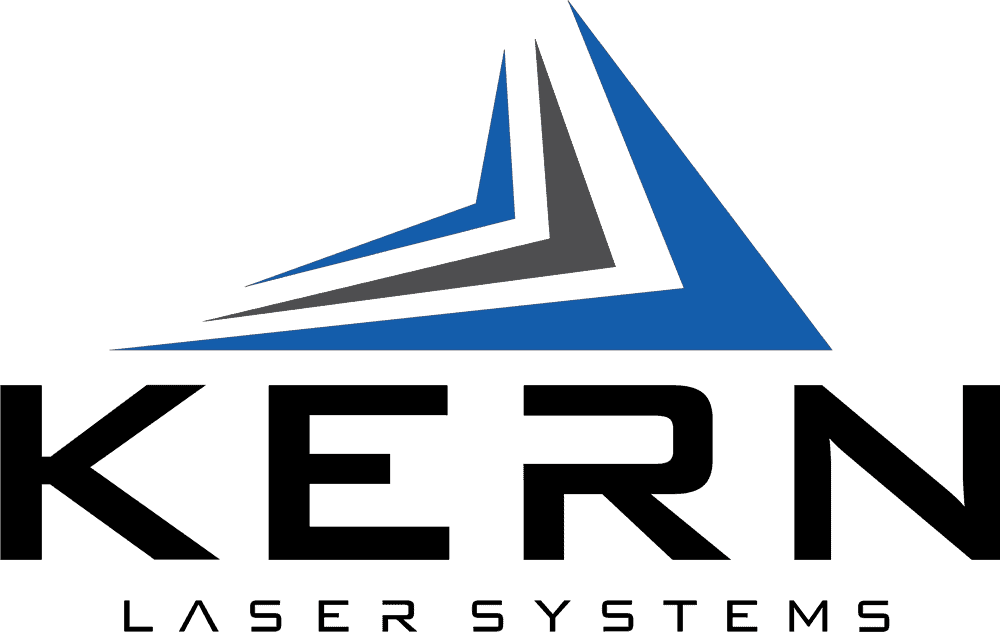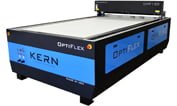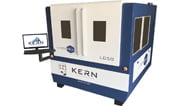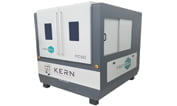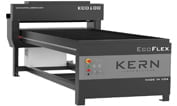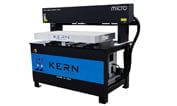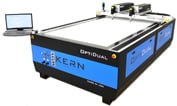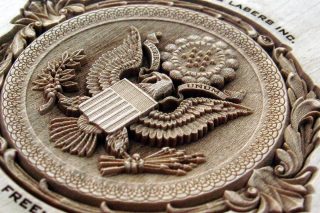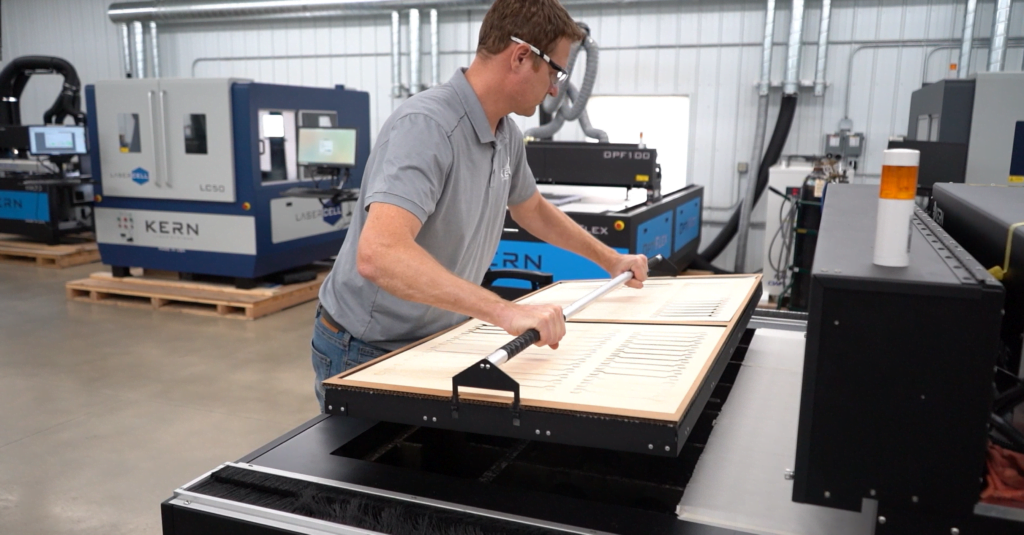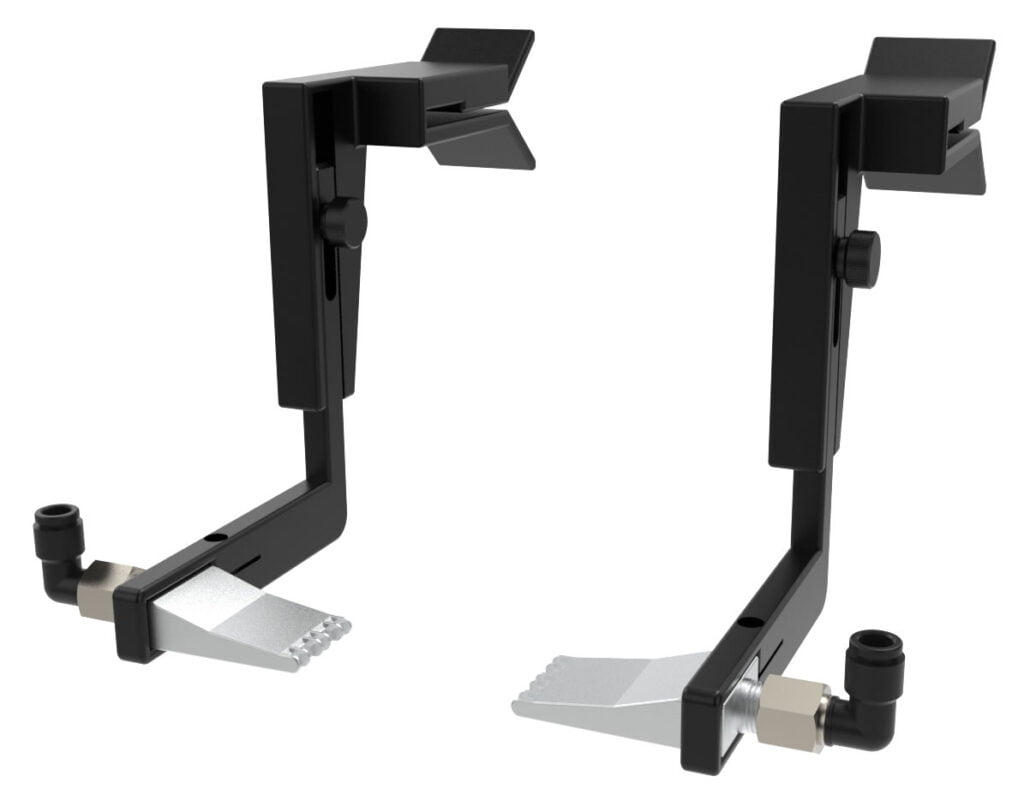Laser cutters are industrial manufacturing tools, and they are often discussed in the context of heavy-duty work: precisely cutting large material sheets to size, cutting uniform parts, and heat-sealing edges in the process. But lasers can also be a great tool for finer detail work and artistic engraving applications. Designing and creating an industrial machine suited to such delicate work is a bit of an art, as well, so in this blog post, we’ll take a look at some of the specifications that make a laser system great for engraving.
In general, every major laser company offers laser machines with basic engraving capabilities. But not all of these machines are created equal, and not all will be able to put out a high-quality, high-resolution engraving. Kern laser systems excel at this kind of work. The excellent engraving results possible on our laser systems are a dance between three major components: our KCAM software, our Kern CO2 laser source, and excellent servo motors.
The Laser Source
One important factor is the laser source. The laser needs to be able to modulate at high speeds in order to capture the subtle variations of an engraving file. The metal-sealed RF laser sources used in our CO2 laser systems are built in-house and designed to perform well in our products. These lasers offer very stable output power, which is another factor important to engraving performance.
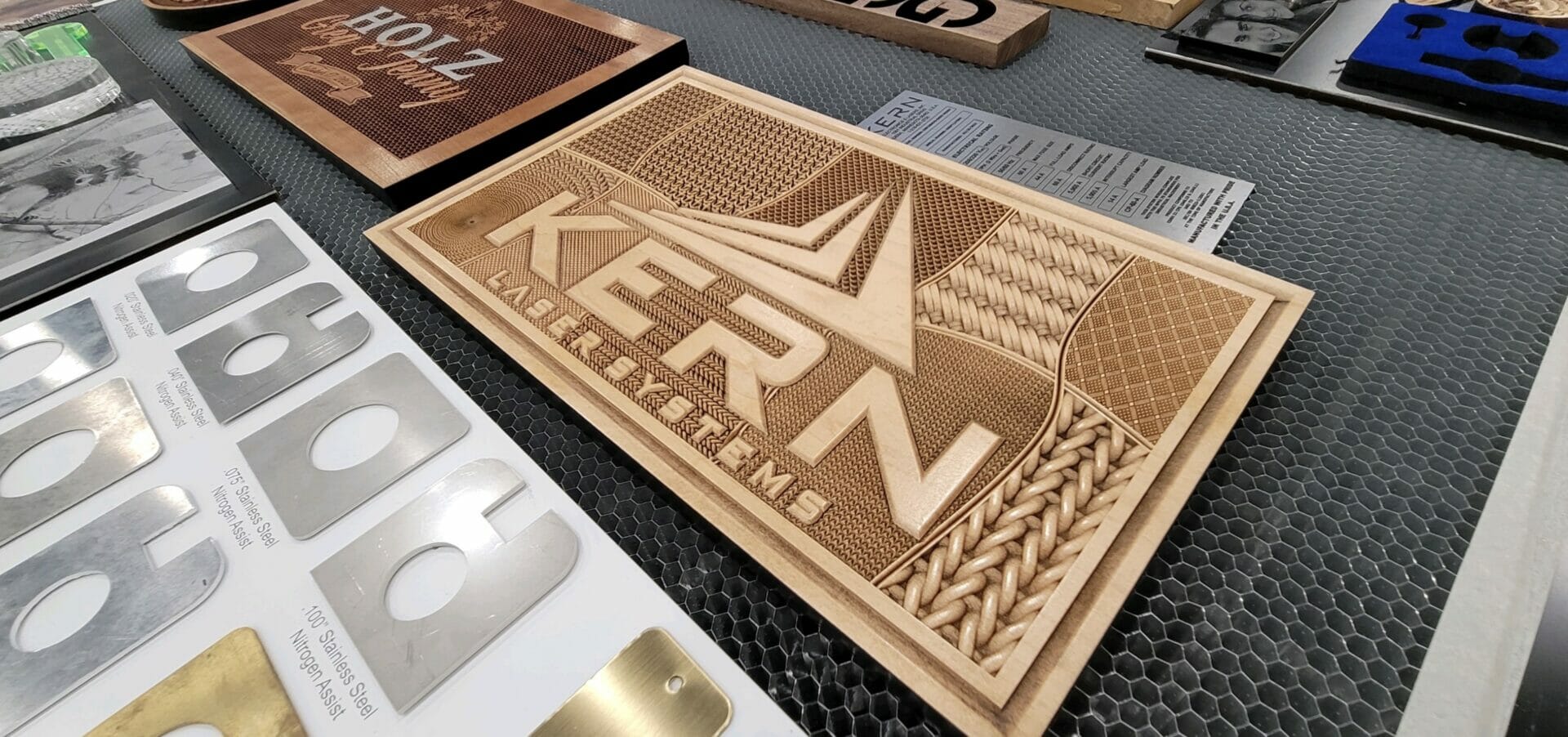
Servo Motors
We use high-quality servo motors from Yaskawa in our systems, designed to line up perfectly with the firing of the beam from the laser. On a large-format laser table, the speed and power of the servo motors are of paramount importance, since they propel the laser cutter over the surface of the laser table and ensure the cutting head is positioned over the correct point on the material to make the correct cuts or engraving marks, corresponding to the cutting file.
Software
Software is a third major factor in engraving performance. Not all laser software will offer the resolution necessary for highly detailed engraving. Our proprietary KCAM software offers 256 shades of gray, covering the full spectrum, which allows for beautifully detailed engravings.
Most machines can handle simple black-and-white engravings but aren’t equipped for 3D engravings with a full spectrum of grayscales. At lower resolutions, our machines can engrave quickly, but they can also reproduce all the details of a high-resolution image file.
During engraving, our systems are precisely firing the laser for each pixel of the cutting filetype, at 600 dots per inch (dpi), and the laser power is also being very precisely controlled on each pixel, capturing every variation of the cutting file accurately. Pulse width is calculated based on the shade of gray in the cutting file, and our systems are able to do that at a speed of up to 90 kHz, which allows users to engrave 150 inches per second at 600 dpi.
Other Considerations
Something else to consider when looking at laser engraving systems is the size of the engraving surface. This will dictate how big of an engraving you are able to produce, and the size of the surface may also have a relationship to the quality of the engraving produced or the speed of production if the other components of the laser system are not optimized to perform well at all speeds at that size.
Our laser engraving machines have a larger format table than many other products on the market, which makes their excellent engraving performance even more impressive. Some competitors’ products might be able to produce a great small engraving, but the ability of our lasers to reproduce fine detail on a larger surface is much less common.
Kerf-width and focal spot size are also important considerations for laser engraving performance. If these are not precise enough, it will be more difficult to produce a high-quality engraving without distracting artifacts from processing.
Lastly, engraving quality is also a product of using a high-quality cutting file image. With a poor image, even a great laser system will produce an undesirable engraving result.
The best way to know whether a laser engraving system will meet your needs is testing. We offer to test clients’ material on our machines, which allows us to make sure our lasers will do the job they want them to, and in the process, we can help clients determine the optimal settings to use for their material on their laser. We can estimate the client’s rate of production on their system and make suggestions for optimizing the process or cutting files to ensure the highest possible throughput.
